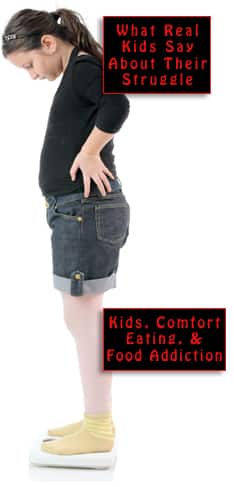
Health columnist Melinda Beck writes for the The Wall Street Journal, and she had also formerly edited that publication’s Marketplace section. Recently, she looked into the technology of fMRI (functional magnetic resonance imaging) scanning, and how it might impact childhood obesity research. Among the different ways of taking pictures of the brain in action, this one might have the most potential to affect the current thinking on why people get fat.
Beck delineates the two kinds of eating behavior. Homeostatic eating is what we do to maintain health, and grow within certain limits. There are other limits, set by our environment and the availability of food. The body has ways of measuring its own satiation — it will tell you when you’ve had enough — if you’re listening.
Homeostatic eating recognizes food as fuel, and when the system is well-tuned, it discriminates between quality fuel and the other kind, the kind that comes with a greater cost to the body than it would really prefer to pay. This is eating to live.
There is a spectrum. A strict homeostatic diet is represented by the gruel traditionally fed to orphans and prisoners, hospital tube feedings, astronaut food, and mothers’ milk. When stocking up for a mountain hike, you want the most fuel for the least weight in your backpack. The homeostatic end of the spectrum is pragmatic and boring.
Then, the other end of the spectrum is hedonic eating in its extreme forms. Eating more for pleasure than from hunger, eatertainment, living to eat — food is no longer fuel, but an exciting aesthetic experience. The choosing of it, the preparation of it, the ritualization of it, some would call it fanatical or fetishistic. Of course, there is nothing actually wrong with being a gourmet or a wine snob.
There is nothing actually wrong with another kind of hedonic eating, either. Not in the sense where we want to cast blame on people for being overweight. Maybe it really isn’t their fault. They don’t have an “off” switch, and their “on” switch is set way too low. Beck says,
Obese people react much more hedonistically to sweet, fat-laden food in the pleasure and reward circuits of the brain than healthy-weight people do. Simply seeing pictures of tempting food can light up the pleasure-seeking areas of obese peoples’ brains.
This new imaging technology seems to indicate that the amygdala, the brain’s emotional headquarters, can present a problem, but other brain sectors also come into play.
Beck interviewed research psychologist Susan Carnell of the New York Obesity Research Center, who says that seeing a picture of a chocolate brownie, or in some cases, even hearing the words “chocolate brownie,” can activate areas of the brain involved with emotion, memory, attention, reward, and motor planning. If you’re ultra-susceptible, the nice piece of pie on this page brings back memories of Mom and how she would bake your favorite pie if you got an “A” in math, and already your arm is twitching to reach out for that pie, even though you know it’s only a picture.
There’s even more to it. Beck says,
Studies have found that a diet of sweet, high-fat foods can indeed blunt the body’s built-in fullness signals. Most of them emanate from the digestive tract… when the stomach and intestines are full. Those signals travel up to the brain stem and then the hypothalamus, telling the body to stop eating.
So, the normal, healthy resistance has eroded somehow. And as if that weren’t bad enough, the “off” switch is out of order. Hopefully this kind of fMRI research can lead to solutions.
Your responses and feedback are welcome!
Source: “Eating to Live or Living to Eat?,” WSJ.com, 07/13/10
Image of the exposed brain by brain_blogger, used under its Creative Commons license.
Image of the strawberry pie by hlkljgk, used under its Creative Commons license.

 FAQs and Media Requests:
FAQs and Media Requests: 












0 Responses